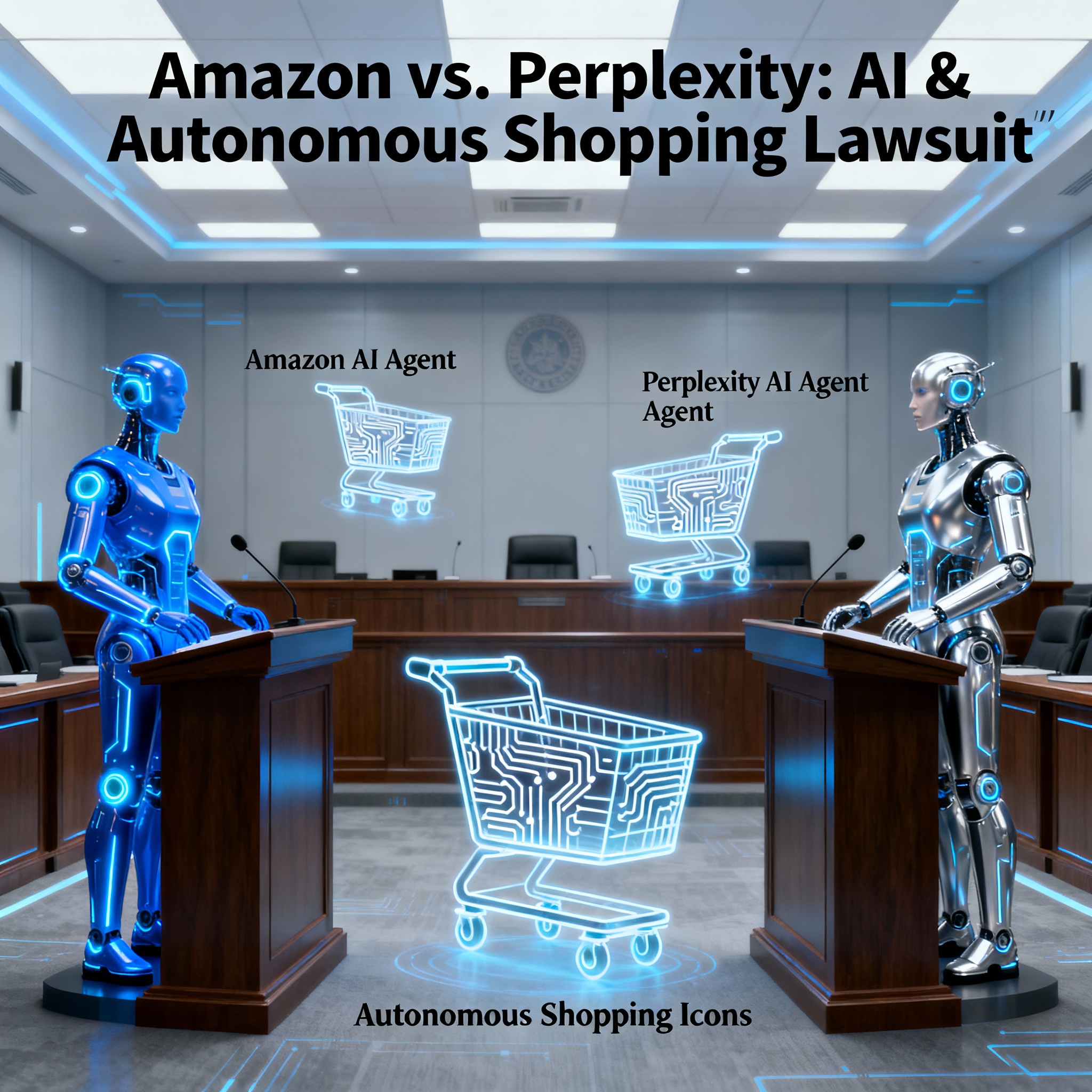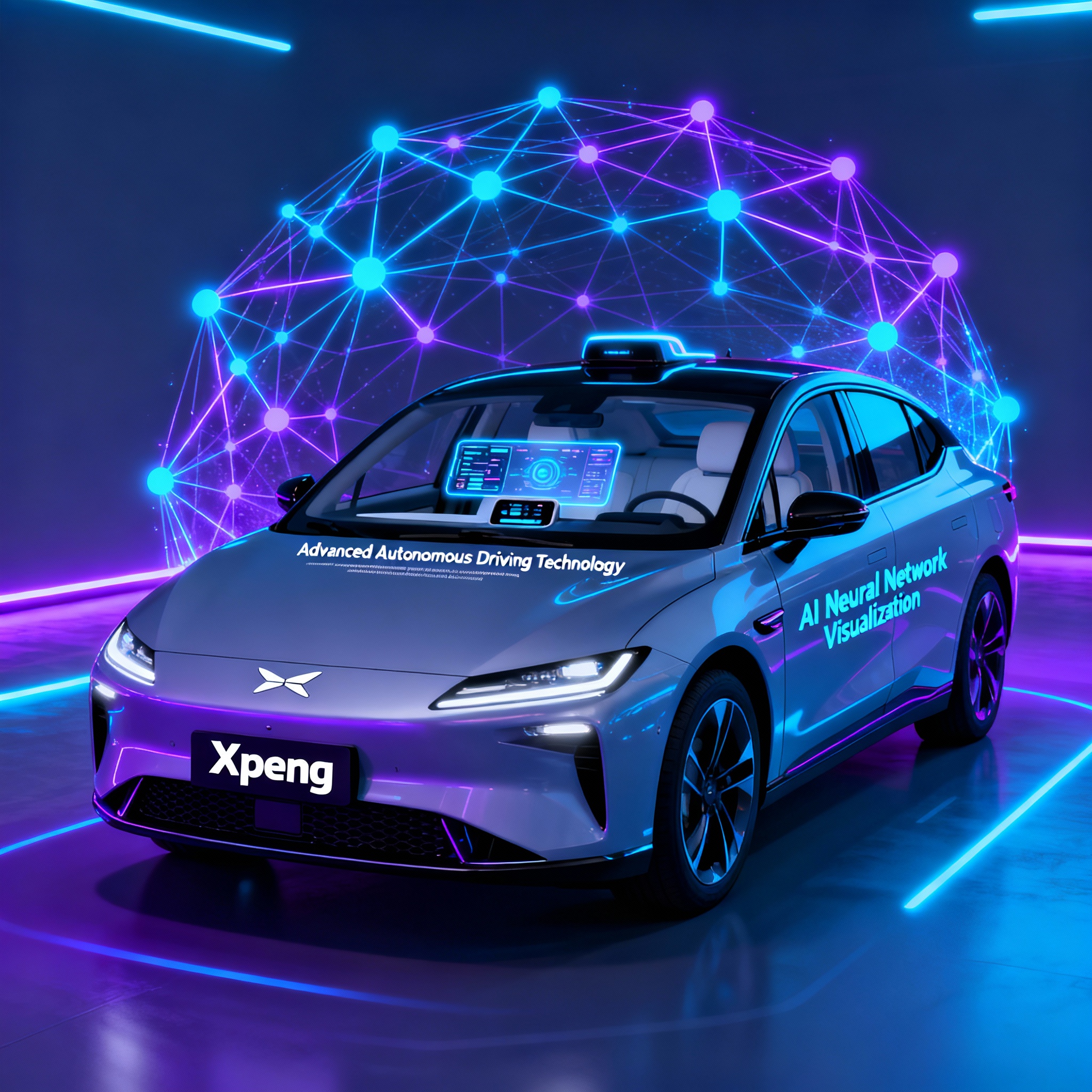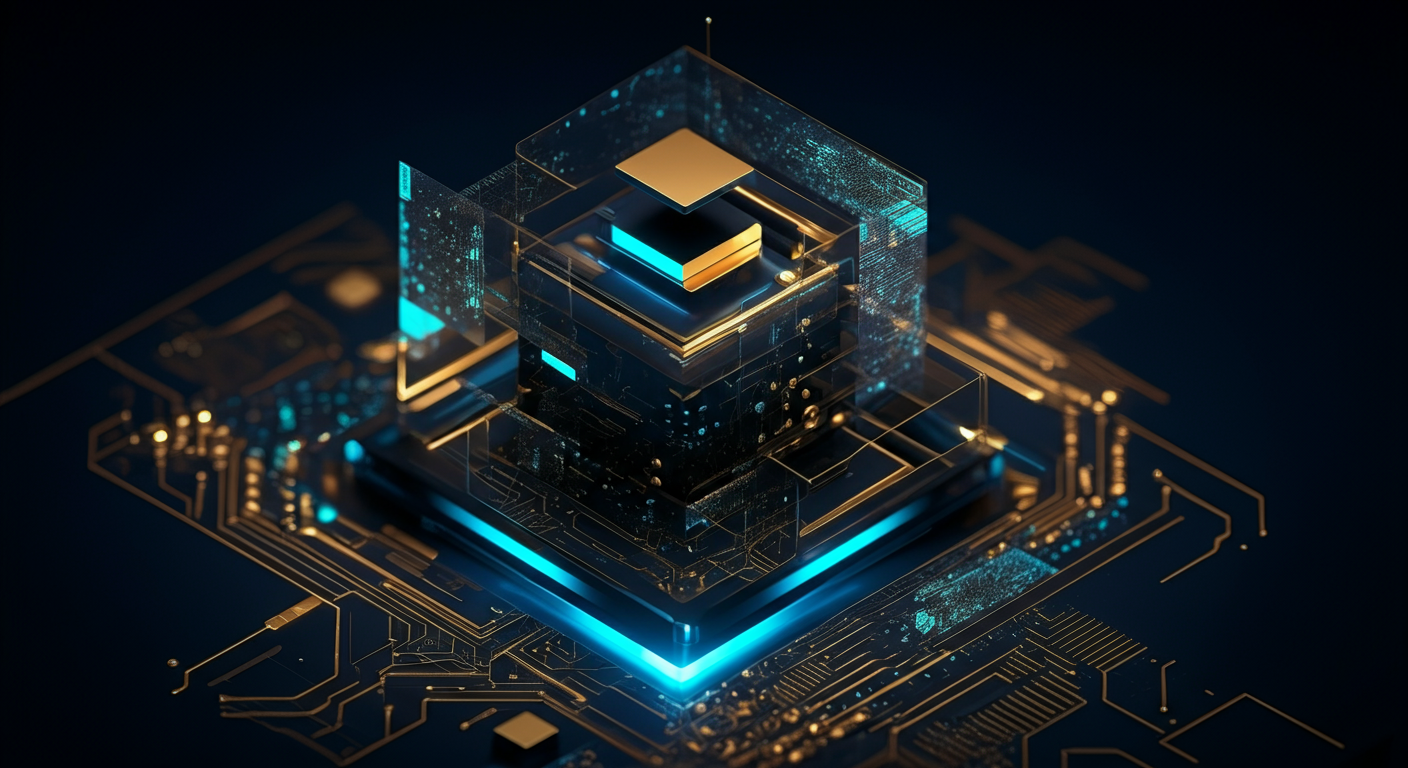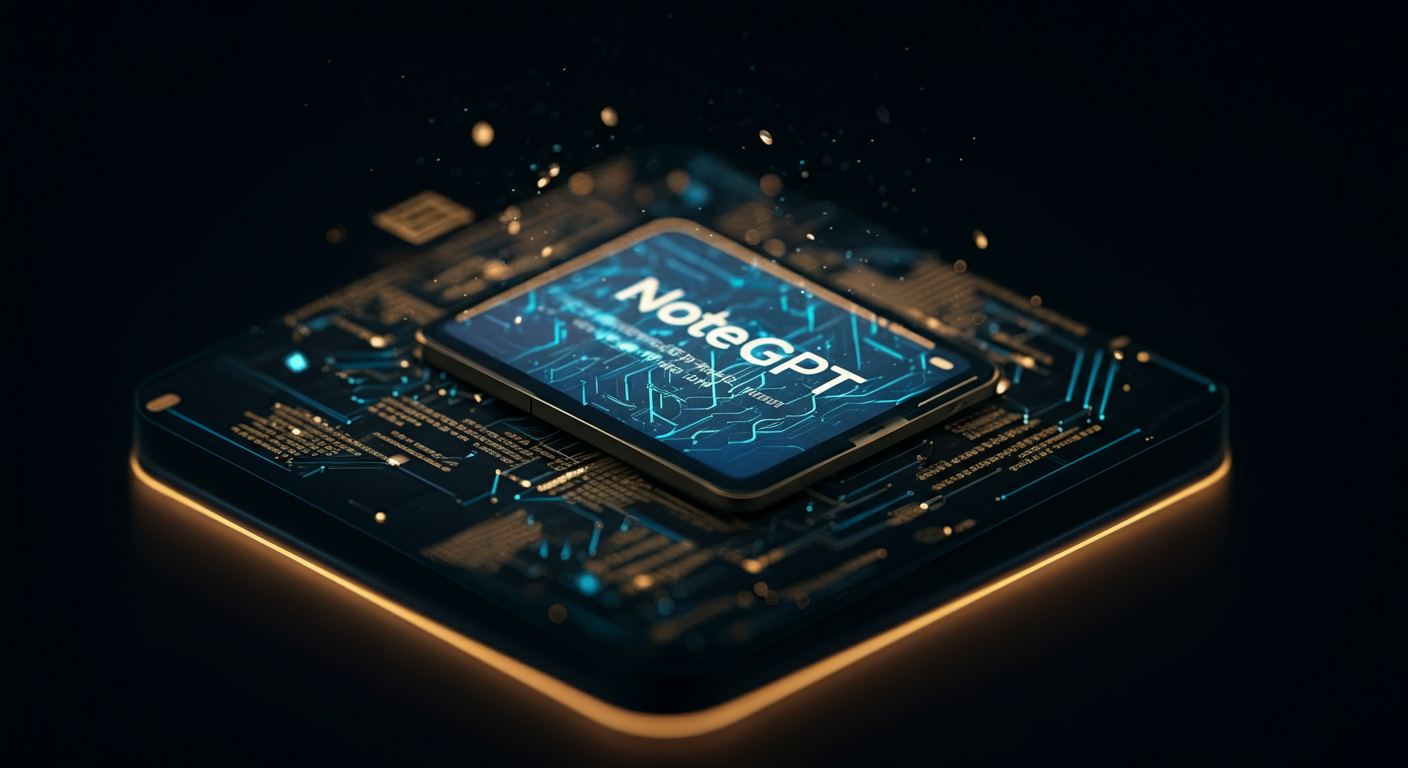AI Revolution: SoftBank & OpenAI Partnership, Amazon vs. Perplexity, and 2026 Cybercrime Forecast - DAily AI News 5. Oct. 2025

The year 2026 marks AI's shift from innovation theater to an operational necessity, deeply impacting enterprises and cybersecurity. Readers will gain insights into the key drivers of AI adoption, including consolidation and security evolution, enabling them to prepare for the AI-driven future. To stay ahead, organizations must prioritize building robust security architectures tailored for AI-driven infrastructure.
SoftBank and OpenAI's Enterprise AI Push in Japan
The AI landscape is constantly evolving, and a recent strategic alliance is poised to make significant waves in Japan's enterprise sector. SoftBank and OpenAI have joined forces to launch SB OAI Japan, a joint venture designed to accelerate the adoption of enterprise AI solutions throughout the country. This move isn't just about bringing cutting-edge technology to Japanese businesses; it's a bold step towards reshaping corporate workflows and driving a new era of innovation. OpenAI is a leading AI research and deployment company. They are best known for their powerful large language models such as ChatGPT and DALL-E.
Crystal Intelligence: The Enterprise AI Game-Changer
At the heart of this partnership is Crystal Intelligence, a comprehensive enterprise AI solution tailored for the Japanese market. While specific details remain under wraps, Crystal Intelligence is expected to offer a suite of AI-powered tools and services, enabling businesses to:
Automate routine tasks: Streamlining operations and freeing up human employees for more strategic work.
Enhance decision-making: Providing data-driven insights to inform critical business choices.
Personalize customer experiences: Creating more engaging and relevant interactions with clients.
Boost overall productivity: Optimizing workflows and maximizing efficiency across the organization.
SoftBank itself will act as the first internal validator of Crystal Intelligence, putting the solution through its paces within its own vast operations. This real-world testing will provide valuable feedback and ensure the solution is robust and ready for widespread deployment.
IPO on the Horizon?
The ambitions for SB OAI Japan appear to extend beyond simply deploying AI solutions. There's already speculation about a potential IPO for the joint venture as early as 2026. A successful public offering would not only provide a significant capital infusion but also signal strong investor confidence in the long-term potential of enterprise AI in Japan.
A Blueprint for Global AI Partnerships
This collaboration also reflects a broader vision articulated by OpenAI's CEO, Sam Altman, who envisions a network of multinational AI partnerships. This blueprint involves OpenAI collaborating with local partners in different countries to tailor AI solutions to specific regional needs and regulatory environments. The SoftBank partnership serves as a prime example of this strategy in action.
By combining SoftBank's deep understanding of the Japanese market with OpenAI's AI expertise, SB OAI Japan is poised to drive significant advancements in enterprise AI adoption, potentially setting a new standard for how AI is integrated into corporate workflows. Staying informed about the latest developments in AI News will be crucial to understanding the impact of this partnership.
Amazon's Legal Battle with Perplexity Over AI Shopping Agents

The AI landscape is never short on drama, and the recent legal clash between Amazon and Perplexity AI is a prime example, raising critical questions about the boundaries of AI autonomy and platform control. Amazon has filed a lawsuit against Perplexity AI, alleging that its Comet browser agent violates Amazon's terms of service by scraping product information and circumventing its security measures. The heart of the accusation lies in Perplexity's AI-powered shopping agent, designed to provide users with instant product comparisons and recommendations, pulling data directly from e-commerce sites like Amazon.
The Core of the Dispute: Data Scraping and Terms of Service
Amazon claims that Perplexity's Comet agent essentially acts as an unauthorized bot, excessively crawling its product pages and extracting data without permission. This, according to Amazon, not only violates its terms of service but also places undue strain on its servers and potentially exposes vulnerabilities. This is a major concern as it challenges the basic rules that keep large platforms functioning smoothly. Consider it like this: if everyone decided to cut in line at the grocery store, the whole system would break down. Similarly, unrestricted AI data scraping can destabilize online ecosystems. You might think of using a tool like n8n, the open-source workflow automation platform, to monitor data flow and identify potential violations, but the core legal issue remains.
Perplexity's Defense: Agent Autonomy and Consumer Empowerment
Perplexity AI, on the other hand, is vigorously defending its Comet browser agent, arguing that it operates autonomously on behalf of its users, providing them with valuable information and promoting consumer choice. Their argument hinges on the idea that users should have the right to employ AI tools to gather information and make informed decisions. They assert that their agent is simply acting as a sophisticated research assistant, gathering publicly available data to serve its users' needs. In essence, Perplexity believes they are democratizing access to information and empowering consumers to navigate the complex world of online shopping more effectively. It’s a bit like saying a librarian is just helping you find the books you need, not breaking into the library's database.
Implications for the Agentic AI Ecosystem
This lawsuit has far-reaching implications for the broader AI ecosystem, especially for companies developing agentic AI tools, including major players like OpenAI and Google. If Amazon succeeds in its legal challenge, it could set a precedent that severely restricts the ability of AI agents to operate autonomously on online platforms. This could stifle innovation and limit the potential of AI to enhance user experiences. The legal battle also raises fundamental questions about the rights and responsibilities of AI agents. Are they simply extensions of their users, or do they have independent legal standing? How should the boundaries of their activity be defined and regulated? These are complex issues that will require careful consideration by courts and policymakers. You can follow these types of news and more in the AI News section.
As the case progresses, the AI community will be closely watching, as the outcome could reshape the future of AI-powered e-commerce and the balance between platform control and AI agent autonomy.
Google's Cybersecurity Forecast: AI-Supercharged Cybercrime in 2026
Imagine a world where cyberattacks are not just sophisticated, but also eerily human-like, powered by the very AI tools designed to protect us. That's the future Google Cloud Security paints in its Cybersecurity Forecast 2026, and it's a vision that demands our immediate attention. The report isn't just a collection of predictions; it's a warning about how rapidly threat actors are adopting and adapting AI for malicious purposes. Let's dive into some of the key findings.

The AI-Powered Cybercrime Wave
According to Google's forecast, by 2026, we'll see a significant shift where standard AI tools are commonplace in the arsenals of cybercriminals. This isn't just about automating existing attacks; it's about creating entirely new classes of threats that are more targeted, more persuasive, and harder to detect. Think of it as a democratization of cybercrime, where even relatively unsophisticated actors can leverage AI to punch far above their weight.
The Prompt Injection Threat
One of the most insidious threats highlighted is the rise of prompt injection attacks. Imagine feeding carefully crafted, malicious prompts into an AI system, tricking it into executing unintended actions. This could range from manipulating chatbots to divulging sensitive data to even hijacking entire AI-powered applications. The potential damage is immense, as these attacks exploit the fundamental way AI models interpret and respond to input. It’s like whispering a secret command that unlocks the AI's hidden vulnerabilities.
The Rise of AI Voice Cloning and Executive Impersonation
Another area of concern is the increasing sophistication of AI-powered voice cloning. As these technologies improve, the risk of executive impersonation becomes a very real threat. Imagine a cybercriminal cloning the voice of a CEO and using it to authorize fraudulent transactions or spread misinformation within a company. The consequences could be devastating, eroding trust and causing significant financial losses. AI tools like ElevenLabs, known for its realistic voice synthesis capabilities, are making this threat increasingly potent.
The Shadow Agent Challenge
Google's report also shines a light on the emerging "shadow agent" challenge. This refers to unauthorized AI agents operating within an organization, potentially creating security risks without the knowledge or oversight of IT teams. These rogue agents could be misconfigured, have access to sensitive data, or even be compromised by malicious actors, creating new attack vectors that are difficult to detect and mitigate. This highlights the urgent need for robust governance frameworks for AI agents, treating them as distinct digital entities with defined roles, permissions, and monitoring protocols.
The Cybersecurity Forecast 2026 is a stark reminder that the AI revolution is a double-edged sword. While AI offers incredible opportunities for innovation and progress, it also presents new and complex security challenges. Addressing these challenges requires a proactive and collaborative approach, with organizations, researchers, and policymakers working together to develop effective defenses and responsible AI governance. To stay ahead of these emerging threats, it's crucial to monitor resources like the AI News section, which covers the latest developments in AI and cybersecurity.
Venture Capital Floods into AI Startups
The AI revolution isn't just about groundbreaking technology; it's a financial tidal wave reshaping the venture capital landscape. In 2025, we witnessed a record-shattering $192.7 billion flowing into AI startups, a clear indication of the massive potential investors see in this transformative field. This influx of capital underscores the belief that AI isn't a fleeting trend but a fundamental shift in how we live and work.
AI: The King of VC Funding

That staggering $192.7 billion isn't just a big number; it represents a dominating 53% of all venture capital funding worldwide. This means that for every two dollars invested in startups globally, more than one went directly into AI-related ventures. This dominance highlights the unparalleled investor confidence in AI's capacity to generate substantial returns and disrupt established industries. The rise of AI News has been a contributing factor to this trend, keeping investors informed and excited about the possibilities.
Mega-Rounds for the Big Players
While the overall investment figures are impressive, the distribution of funds reveals an interesting trend. Mega-rounds – those exceeding $100 million – were largely concentrated among established AI players. Companies like Anthropic, known for their cutting-edge language models such as Claude, and xAI, Elon Musk's ambitious venture, secured the lion's share of these massive investments. This trend suggests that investors are placing their bets on companies with proven track records and the potential to become AI giants. These companies are pushing the boundaries of what's possible, similar to Google Gemini, a multimodal AI model designed to reason, plan, and learn.
Investing in the Foundation: AI Infrastructure
Beyond the headline-grabbing mega-rounds, a significant portion of VC funding flowed into AI infrastructure. This includes companies developing specialized hardware, data management solutions, and cloud computing platforms essential for training and deploying AI models. This sustained investor conviction in AI infrastructure signals a long-term vision, recognizing that a robust foundation is crucial for the continued advancement and widespread adoption of AI across various sectors. Investors realize that building and maintaining this infrastructure is as important as the AI models themselves. This also includes areas like Prompt Engineering, which needs platforms and resources to flourish.
Examples of Funding Deals
Several notable funding deals exemplify the diverse range of AI startups attracting investor attention. Mercor, an AI-powered hiring platform, secured a significant round to further develop its technology for streamlining the recruitment process. This highlights the growing interest in AI applications for human resources and talent management. Another example is Fireworks AI, which attracted substantial investment to accelerate its work in making AI more accessible and scalable for businesses. These deals showcase the breadth of opportunities within the AI ecosystem and the willingness of investors to back innovative solutions.
The flood of venture capital into AI startups shows no signs of slowing down, suggesting that the AI revolution is just getting started. As AI continues to mature and find new applications, we can expect even greater investment and innovation in the years to come.
Xpeng's Robotaxi Advancements and Asia-Pacific Innovation
The race for autonomous vehicles is heating up, especially in the Asia-Pacific region, with companies like Xpeng leading the charge. They're not just building cars; they're envisioning a future where robotaxis become an integral part of our lives. Let's delve into Xpeng's advancements and the broader innovation landscape in Asia.
Xpeng's Robotaxi Vision: More Than Just a Vehicle
Xpeng is positioning its robotaxi not merely as a mode of transportation, but as a "companion that understands communication." This suggests a focus on creating a seamless and intuitive user experience, where the robotaxi anticipates passenger needs and interacts naturally. Imagine a vehicle that understands your preferences, adjusts the environment to your liking, and even offers helpful suggestions based on your destination. This human-centric approach could be a key differentiator in the competitive autonomous vehicle market. You can follow companies like Xpeng that spearhead advancements in AI, and also keep up with the latest developments in AI News to remain at the forefront of this rapidly evolving landscape.
Xpeng AI Day 2025: A Glimpse into the Future

At Xpeng AI Day 2025, the company unveiled significant breakthroughs in several key areas: physical AI, robotaxis, and autonomous driving. While specific details are scarce, these announcements signal a clear commitment to pushing the boundaries of what's possible with AI-powered transportation. Physical AI likely refers to robots that can interact with the physical world and potentially even collaborate with humans. These advancements are powered by the Canghai Platform, Xpeng's AI automotive neural system designed for Level 4 autonomous driving. Level 4 autonomy means the vehicle can handle most driving situations without human intervention, although a human driver can still take control if needed.
Humanoid Robotics on the Rise: TrendForce's Perspective
Beyond autonomous vehicles, Asia is also seeing rapid growth in humanoid robotics. TrendForce, a market research firm, recently held a seminar in Seoul highlighting humanoid robotics as a strategic growth sector. This underscores the increasing importance of robots that can perform human tasks, potentially revolutionizing industries ranging from manufacturing to elder care. A key driver behind this trend is labor shortages. As populations age and workforce participation declines in many countries, humanoid robots offer a potential solution to fill critical labor gaps. These robots might one day work alongside humans in factories, warehouses, and even our homes.
Asia's focus on both autonomous vehicles and humanoid robotics demonstrates a forward-thinking approach to AI-driven solutions. By investing in these technologies, countries in the region are positioning themselves to lead the next wave of innovation and address pressing societal challenges.
2026: The Year AI Transitions from Innovation Theater to Operational Necessity
The year 2026 is shaping up to be pivotal, marking AI's transition from flashy demos and laboratory breakthroughs to an operational necessity deeply embedded within enterprises. Multiple key developments are converging to accelerate this shift, from the SoftBank-OpenAI partnership to the Amazon-Perplexity dispute and Google's cybersecurity forecasts.
From Innovation Theater to Core Operations
For years, AI has often felt like a science experiment, relegated to R&D labs and pilot projects. But 2026 will be the year AI truly scales. We'll see enterprises moving beyond isolated AI deployments to comprehensive, company-wide integration. Instead of simply experimenting with ChatGPT, for example, companies will build entire workflows and customer experiences around it. Imagine customer service agents equipped with real-time AI assistance, or marketing teams using AI to personalize campaigns at scale. This shift is fueled by increased availability of AI tools, declining costs, and a growing understanding of AI's tangible business benefits.
Platform Control vs. Agentic Autonomy: Emerging Tensions
As AI becomes more deeply integrated, tensions will emerge between the desire for centralized platform control and the need for agentic autonomy. On one hand, businesses want to maintain oversight and governance over their AI systems, ensuring compliance and preventing unintended consequences. On the other hand, truly transformative AI applications require agents to operate with a degree of independence, making decisions and taking actions without constant human intervention. Finding the right balance between these competing forces will be a critical challenge in 2026. This includes tools like AutoGPT, an open-source AI agent, which demonstrates the power and potential risks of autonomous AI.
Cybersecurity: A Radically Redesigned Defensive Architecture
With increasing AI adoption comes increased cybersecurity risks. Bad actors will undoubtedly seek to exploit AI systems for malicious purposes, from launching sophisticated phishing attacks to manipulating autonomous vehicles. In 2026, we'll see a radical redesign of defensive architectures, specifically tailored to protect autonomous agents and AI-driven infrastructure. This includes leveraging AI for threat detection and response, as well as implementing robust security protocols to prevent unauthorized access and manipulation. Google's cybersecurity forecast will likely highlight these evolving threats and the need for proactive defense strategies. This will involve new tools and strategies found through resources like AI News.
Consolidation, Contestation, Evolution, Expansion: The Drivers of AI Adoption
Ultimately, AI adoption in 2026 will be driven by a combination of factors: Consolidation in the AI vendor landscape, legal contestation surrounding AI ethics and liability, continuous security evolution to address emerging threats, and geographic expansion into new markets. As these forces converge, AI will become less of a novelty and more of a foundational technology, essential for businesses seeking to compete and thrive in the years ahead. The journey of AI in Practice will illustrate these growing adoption rates across different sectors. In conclusion, the year 2026 will be a year of consolidation, legal contestation, security evolution, and geographic expansion driving AI adoption.
🎧 Listen to the Podcast
Hear us discuss this topic in more detail on our latest podcast episode: https://open.spotify.com/episode/0H1hbROXIxVe80AQHRsE6x?si=CUzVvVBoQdmsx490TybBMA
Keywords: AI, Artificial Intelligence, Machine Learning, OpenAI, SoftBank, Amazon, Perplexity AI, Cybersecurity, Robotaxi, Venture Capital, AI Ethics, Autonomous Agents, AI Security, AI Startups, Xpeng
Hashtags: #AI #ArtificialIntelligence #MachineLearning #TechNews #AI2026
For more AI insights and tool reviews, visit our website https://best-ai-tools.org, and follow us on our social media channels!
Website: https://best-ai-tools.org
X (Twitter): https://x.com/bitautor36935
Instagram: https://www.instagram.com/bestaitoolsorg
Telegram: https://t.me/BestAIToolsCommunity
Medium: https://medium.com/@bitautor.de
Spotify: https://creators.spotify.com/pod/profile/bestaitools
Facebook: https://www.facebook.com/profile.php?id=61577063078524
YouTube: https://www.youtube.com/@BitAutor
Recommended AI tools
ChatGPT
Conversational AI
AI research, productivity, and conversation—smarter thinking, deeper insights.
Sora
Video Generation
Create stunning, realistic videos and audio from text, images, or video—remix and collaborate with Sora, OpenAI’s advanced generative video app.
Google Gemini
Conversational AI
Your everyday Google AI assistant for creativity, research, and productivity
Perplexity
Search & Discovery
Clear answers from reliable sources, powered by AI.
DeepSeek
Conversational AI
Efficient open-weight AI models for advanced reasoning and research
Freepik AI Image Generator
Image Generation
Generate on-brand AI images from text, sketches, or photos—fast, realistic, and ready for commercial use.



